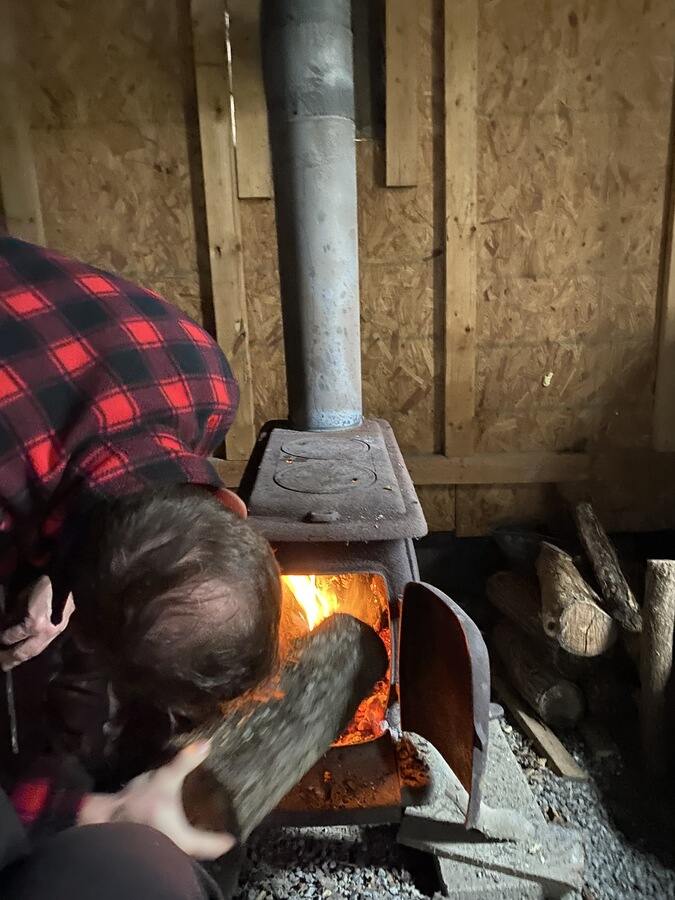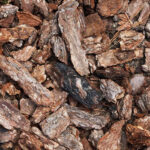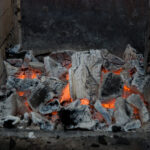Like with any appliance that uses fire, wood-burning stoves can bring up a lot of questions for people in terms of safe usage.
This leads many people to ask: can you leave a wood burning stove unattended?
While the specific circumstances and environment you are using the stove in may affect how much you can leave it unattended, most wood burning stoves can be treated with the same rules as traditional stoves.
Table of Contents
- Why You Can Leave a Wood-Burning Stove Unattended
- How To Leave Your Wood-Burning Stove Unattended Overnight
- How To Safely Extinguish a Wood-Burning Stove
- What Can Happen When You Don’t Follow Safety Precautions?
Why You Can Leave a Wood-Burning Stove Unattended
A wood-burning stove can be left unattended because the fire is enclosed, and you can easily control the fire strength by closing the vents, which causes the flames to die slowly on their own.

This method is much wiser than splashing water on the fire or smothering the stove, both of which can cause smoke and embers to float randomly about the room.
If you are in a pinch though, there are a few generally safe methods you can try to quickly cool down a wood stove.
To make sure your stove is already safe, even before it’s left alone, practice the following:
- Keep flammable objects away from the stove.
- Make sure the stove isn’t leaking.
- Keep a window cracked for ventilation.
- Use properly seasoned wood.
Freshly cut wood contains a lot of moisture, which can cause the stove to produce more smoke and creosote, which is a flammable substance that builds up in chimneys over time. This buildup increases the possibility of a chimney fire.
Properly seasoned wood has been left to dry for at least six months and will burn more efficiently. Premier Firewood Co. Has a great resource on why you should use seasoned firewood.
How To Leave Your Wood-Burning Stove Unattended Overnight
It’s generally safe to leave a wood-burning stove unattended as long as the proper safety precautions are taken, such as:
Make sure the stove is installed correctly and maintained. It should be installed according to the manufacturer’s instructions and local building codes. It should also be kept clean and in good working order.
- Use a stove thermometer to monitor the temperature of the stove. Overheating can be a fire hazard, so keeping the stove at a safe temperature is essential.
- Close the vents slightly while you sleep, but don’t close them completely. The reason for this is that it won’t allow the fire to die down completely, which can create more creosote.
- Keep flammable materials away from the stove. This includes curtains, furniture, and other household items that could catch fire if they come into contact with the stove or its hot surfaces.
- Make sure the chimney is clean and in good repair. A dirty or damaged chimney can lead to a chimney fire, which can be very dangerous.
- Have the chimney inspected and cleaned annually, and repair any damage as soon as possible.
By following these safety precautions, you can safely leave your wood-burning stove unattended. However, it’s always a good idea to check on the stove periodically, especially if you’re going to be away from home for an extended period.
How To Safely Extinguish a Wood-Burning Stove
If you’d rather put out the fire instead of leaving it unattended, here’s how to safely manage the task:
- Allow the fire to burn down. Before attempting to extinguish the fire, close the door fully, and the air vents to a crack, so the fire burns down to softly glowing embers.
- Open the door and the chimney damper with a heat-resistant glove and spread the embers to a flat, even carpet over the ash pan.
- Spray a mist of water over the embers to put them out completely, then close the door.
- Once the stove cools, sweep away the remaining ashes.
What you don’t want to do is splash water on the fire or beat the flames out with a cover.
Both of these tactics will result in heavy smoke and a shower of embers that could land on the curtains, the carpet, or any other place they don’t belong.
If you find your stove is producing too much dust and smoke when you extinguish it, you should check out these 5 ways to reduce wood stove dust!
What Can Happen When You Don’t Follow Safety Precautions?
Leaving a wood-burning stove unattended without taking the above precautions can pose several health hazards, including the risk of carbon monoxide poisoning.
Carbon Monoxide Poisoning
You can’t see or smell carbon monoxide, but it’s produced when you burn anything such as wood or natural gas.
If the stove is not properly ventilated, carbon monoxide can build up in the air and cause serious illness or death.
Carbon monoxide poisoning symptoms can appear as:
- Headache
- Dizziness
- Weakness
- Nausea
- Chest pain
The scary thing here is you won’t even know there’s a problem until it’s too late.
You Can Breathe In Wood Smoke
Another health hazard is the risk of breathing in wood smoke, which contains a variety of pollutants, including delicate particulate matter and volatile organic compounds.
These can irritate the eyes, throat, and lungs and cause respiratory problems.
In fact, this minor airpollution is one of the main reasons why companies and organizations are discussing the banning of certain wood stoves.
When the wood smoke gets inside your house, it can become a larger problem because you don’t have the same ventilation as you would outside sitting around a fire.
Your Chimney Can Get a Creosote Build-Up
Creosote is a highly flammable substance that can build up in the chimney of a wood-burning stove.
If the chimney is not cleaned at least once per year, creosote can accumulate and increase the risk of a chimney fire, which can be very dangerous.
There are several reasons creosote is dangerous:
- It’s a carcinogen, meaning that it has the potential to cause cancer. Inhaling creosote fumes can irritate the respiratory system and increase the risk of developing cancer of the lungs, throat, and other organs.
- Creosote is highly toxic to humans and animals. It can cause skin irritation, allergic reactions, and other health problems if it comes into contact with the skin or is ingested.
- It’s a fire hazard. If it comes into contact with an open flame or another heat source, it can ignite and cause serious injuries or even fatalities.
- Creosote can be harmful to the environment. It can leach into the soil and water supply, contaminating both and potentially causing harm to plants, animals, and humans.
Overall, creosote is a dangerous chemical that should be handled with caution and avoided whenever possible.
If you come into contact with creosote or a product that contains it, it’s important to seek medical attention and follow proper safety guidelines to protect yourself and others.






